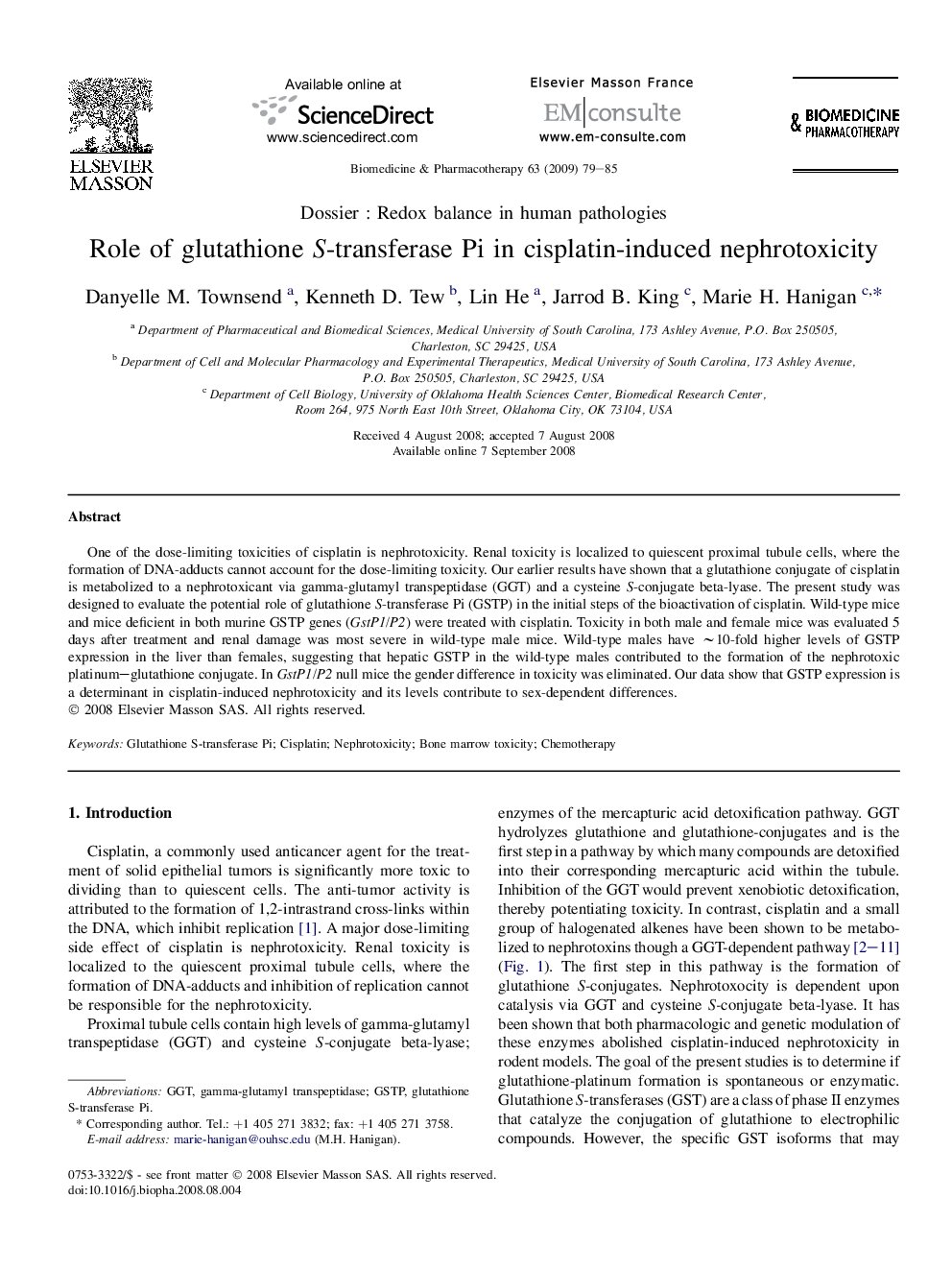| کد مقاله | کد نشریه | سال انتشار | مقاله انگلیسی | نسخه تمام متن |
|---|---|---|---|---|
| 2525297 | 1119606 | 2009 | 7 صفحه PDF | دانلود رایگان |

One of the dose-limiting toxicities of cisplatin is nephrotoxicity. Renal toxicity is localized to quiescent proximal tubule cells, where the formation of DNA-adducts cannot account for the dose-limiting toxicity. Our earlier results have shown that a glutathione conjugate of cisplatin is metabolized to a nephrotoxicant via gamma-glutamyl transpeptidase (GGT) and a cysteine S-conjugate beta-lyase. The present study was designed to evaluate the potential role of glutathione S-transferase Pi (GSTP) in the initial steps of the bioactivation of cisplatin. Wild-type mice and mice deficient in both murine GSTP genes (GstP1/P2) were treated with cisplatin. Toxicity in both male and female mice was evaluated 5 days after treatment and renal damage was most severe in wild-type male mice. Wild-type males have ∼10-fold higher levels of GSTP expression in the liver than females, suggesting that hepatic GSTP in the wild-type males contributed to the formation of the nephrotoxic platinum–glutathione conjugate. In GstP1/P2 null mice the gender difference in toxicity was eliminated. Our data show that GSTP expression is a determinant in cisplatin-induced nephrotoxicity and its levels contribute to sex-dependent differences.
Journal: Biomedicine & Pharmacotherapy - Volume 63, Issue 2, February 2009, Pages 79–85